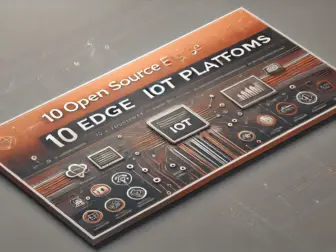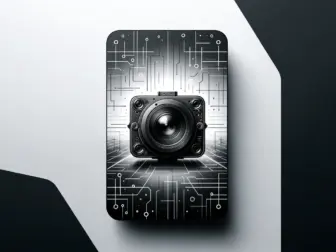Tag - Technology Innovation
Blog, Edge Computing and Data Analytics, IoT Tools and Platforms , September 14, 2024 , AI at the edge, automation, Cloud Integration, Connectivity, Device management, digital transformation, Distributed Computing, Edge Computing, Edge IoT, Industry 4.0, IoT Platforms, Open Source, Smart Devices, Technology Innovation
Exploring Cutting-Edge Innovations: How Modern Technology Is Shaping Our Future
Exploring Cutting-Edge Innovations: How Modern Technology Is Shaping Our Future
In today’s fast-paced world, technology innovation is the driving force behind transformative changes that redefine how we live, work, and interact. The relentless quest for improvement has led to the emergence of groundbreaking technologies that push the boundaries of what’s possible. From developments in artificial intelligence (AI) and machine learning to advancements in biotechnology and nanotechnology, each innovation carries the potential to revolutionize entire industries and significantly impact our daily lives.
One of the most talked-about areas of technology innovation is artificial intelligence. AI has evolved from a niche concept into a suite of technologies that underpin many modern services. From personalized recommendations on streaming platforms to sophisticated chatbots providing customer service, AI applications are becoming omnipresent. Moreover, AI is now an indispensable tool in research and development, aiding in the discovery of new drugs, optimizing logistics, and even predicting market trends with unprecedented accuracy.
Another significant area of innovation lies in the realm of the Internet of Things (IoT). IoT refers to the network of interconnected devices capable of collecting and exchanging data without human intervention. This technology has enabled smart homes, where appliances can communicate and be remotely controlled, and smart cities, where IoT devices help manage traffic flows, monitor environmental quality, and improve public safety. The data generated by these devices provides invaluable insights that drive efficiency and sustainability.
Biotechnology also continues to be an area ripe with innovation. The recent advent of CRISPR-Cas9 gene-editing technology has given scientists the ability to modify DNA with precision, promising new treatments for genetic disorders and diseases. Biotech companies are also working on synthetic biology, creating new forms of life designed to address specific issues, such as bacteria programmed to break down plastic waste or bio-engineered crops that can withstand harsh climate conditions.
Renewable energy technologies are witnessing significant innovations as well. Solar and wind power are more efficient and affordable than ever, thanks to improvements in solar panel materials and wind turbine design. Moreover, the development of advanced battery storage solutions is addressing one of the main challenges of renewable energy: its variability. With better energy storage, renewable power can be harnessed more effectively, moving us closer to a future of sustainable energy independence.
In the realm of personal technology, wearables and augmented reality (AR) devices are becoming more sophisticated. Smartwatches now go beyond simple fitness tracking to offer a range of health monitoring features, such as electrocardiogram (ECG) and blood oxygen level detection. AR glasses and headsets are introducing new ways of interacting with digital content, blending the virtual and real worlds in immersive experiences that have applications in entertainment, education, and industry.
Finally, the transportation sector is undergoing a significant overhaul with the advancement of electric vehicles (EVs), autonomous driving, and even the notion of urban air mobility. EVs are becoming more mainstream, driven by improvements in battery range and a growing charging infrastructure. Autonomous driving technology continues to advance, promising safer and more efficient roadways. Meanwhile, urban air mobility concepts like flying taxis are no longer just the stuff of science fiction, with several companies actively testing prototypes aimed at reducing urban congestion and travel times.
In conclusion, technology innovation is not only a testament to human ingenuity but also a key catalyst for societal progression. As we look forward, it’s clear that the innovations of today are just the tip of the iceberg. The full potential of these technologies will unfold in the years to come, presenting opportunities and challenges that will shape the future of humanity.

